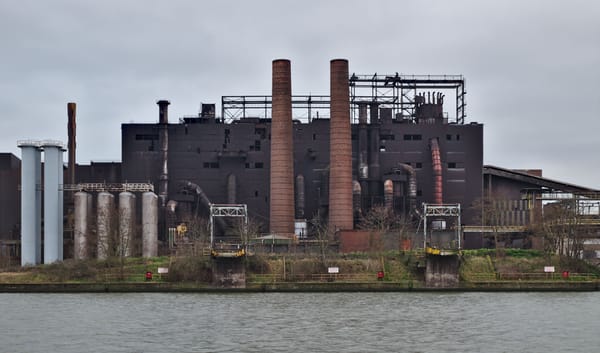For decades, the European Union was regarded as an emerging counterweight to US geopolitical hegemony that would accord its member states greater autonomy from the superpower across the Atlantic. The Russia-Ukraine conflict has revealed the emptiness of this promise. Today, Europe’s “vassalization” (in the words of an analyst for the European Council on Foreign Relations) is arguably more pronounced than at any time since the middle of the 20th century. On geopolitical questions, as the current war has made clear, Brussels has no meaningful independence from Washington. In the economic sphere, Europe’s relative decline and growing dependency on America—which predate the Ukraine conflict but have been exacerbated by it—are if anything even more evident.
In 2008, the European Union’s economy was slightly larger than America’s; America’s economy in 2023 is one-third larger than those of the European Union and Britain combined, and 50 percent larger than that of the European Union without the United Kingdom. To put it differently, the eurozone’s economy has grown about 6 percent over the past 15 years, compared with 82 percent for the United States, according to data from the International Monetary Fund.
The economic fortunes of the European Union and the United States had already started to diverge well before the Ukraine conflict for several reasons, not least Europe’s post-2008 suicidal austerity policies, which led to a continent-wide demand and investment collapse. Over the past year and a half, however, this process has undergone a dramatic acceleration. Unlike America, Europe has suffered a huge economic blowback from the conflict—or more precisely, from the West’s response, especially its decoupling from Russian gas, which before the war accounted for almost half of the bloc’s demand. This drastic move led to a “massive and historic energy shock,” as the Organization for Economic Cooperation and Development put it, exacerbated by speculation on the part of the big energy companies, which crippled industry and households alike. According to The Economist, high energy prices killed 68,000 people among Europe’s poorest last winter—as European countries turned to much more expensive liquefied natural gas from Qatar and especially the United States.
Last year, soaring energy prices and falling demand caused dozens of plants across a diverse range of energy-intensive industries—glass, steel, aluminum, zinc, fertilizers, chemicals—to cut back production or shut down, which, in turn, led to mass layoffs. In September, The New York Times documented the “crippling” impact that Brussels’s sanctions were having on industry and the working class in Europe, reporting that “high energy prices are lashing European industry, forcing factories to cut production quickly and put tens of thousands of employees on furlough.”
